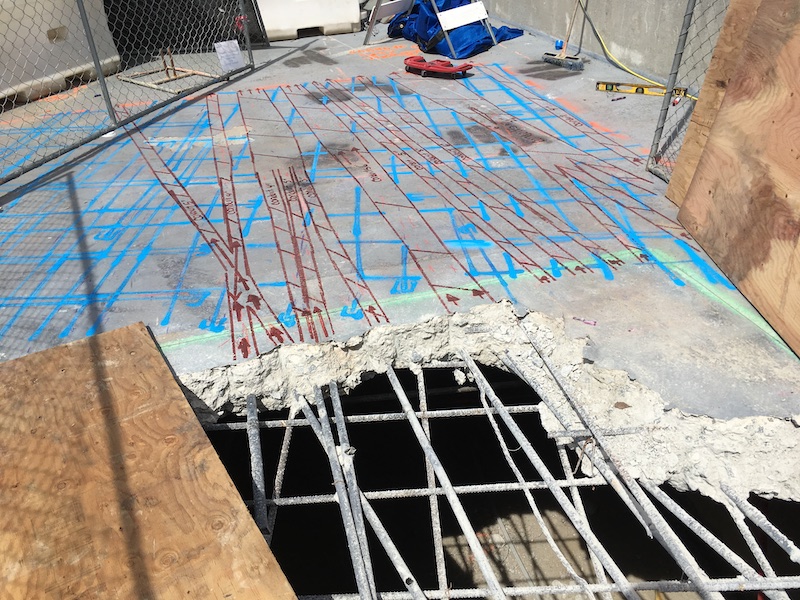RainierGPR Service Areas: Expert Concrete Scanning in Your Area
Wiki Article
Enhancing Job Preparation and Execution Via Advanced Concrete Scanning Methods
In the realm of project preparation and insight, accuracy and implementation are important aspects that can make the difference between success and setbacks. Advanced concrete scanning strategies have actually become an advanced tool established to raise the requirements of job administration within the construction sector. By using advanced innovation, these techniques offer a peek right into the structural honesty of a building even before the first brick is laid. The ramifications of such innovations are profound, guaranteeing a paradigm shift in just how tasks are come close to and provided.Advantages of Advanced Concrete Scanning Strategies

Improved Precision in Task Analyses
Enhancing project assessments via sophisticated concrete scanning methods dramatically increases the precision and reliability of construction examinations. By using sophisticated scanning technologies such as ground-penetrating radar (GPR) and 3D imaging, job teams can now obtain thorough insights right into the problem of concrete frameworks, recognizing potential imperfections or weaknesses that may not be visible to the naked eye. This boosted degree of precision in job analyses makes it possible for building experts to make more informed decisions pertaining to fixing and upkeep methods, bring about improved general project results.Furthermore, the raised accuracy in project analyses attained with innovative concrete scanning techniques aids in decreasing the risk of unexpected problems during the building phase. By proactively identifying hidden anomalies within concrete structures, such as rebar deterioration or voids, job groups can deal with these issues beforehand, staying clear of expensive delays and revamp later on in the project lifecycle. Eventually, the enhanced accuracy in job assessments helped with by advanced concrete scanning methods adds to better efficiency, cost-effectiveness, and high quality in building and construction tasks.
Very Early Recognition of Architectural Challenges
Very early detection of architectural challenges plays an essential duty in making certain the integrity and security of concrete structures throughout the building process. Identifying potential problems at a beginning permits prompt treatment, protecting against costly rework, schedule hold-ups, and safety threats. Advanced concrete scanning strategies, such as ground-penetrating radar (GPR) and 3D imaging, enable project teams to uncover surprise issues, voids, reinforcement design inconsistencies, and various other abnormalities that might jeopardize the structure's security.By executing these techniques throughout the planning and implementation phases, building and construction experts can proactively attend to architectural difficulties before they intensify into major issues. For instance, detecting insufficient concrete cover over support bars at an early stage can stop corrosion and architectural weakening over time - RainierGPR Service Areas. Furthermore, recognizing variations in concrete density or thickness Continue can help enhance material use and make certain uniform toughness residential properties across the framework

Eventually, very early identification of architectural challenges via sophisticated concrete scanning not only boosts the overall top quality and sturdiness of the construction yet likewise adds to a safer built setting for passengers and customers.
Enhanced Safety And Security Measures in Building
The implementation of robust safety procedures is imperative in the building and construction industry to alleviate threats and safeguard the wellness of employees and stakeholders. To boost security actions, building firms are significantly taking on technological developments such as wearable tools that monitor employees' important indicators and detect potential wellness problems in real-time. By prioritizing security via the incorporation of innovative technologies and thorough training programs, building and construction tasks can dramatically minimize accidents and produce a protected working atmosphere for all entailed.
Streamlining Project Monitoring Processes
To optimize functional effectiveness and ensure job success in the construction industry, a focus on enhancing job monitoring processes is crucial. By applying reliable task administration procedures, building projects can lessen hold-ups, minimize expenses, and boost overall productivity. One essential aspect of simplifying task monitoring is the use of innovative innovations such as Building Info Modeling (BIM) software, which allows real-time collaboration, clash discovery, and accurate project organizing. Additionally, the fostering of cloud-based job management systems permits seamless communication among group members, instant accessibility to task information, and the ability to track progress in real-time.
Final Thought
In conclusion, the use of innovative concrete scanning techniques look at this now uses various advantages for job read more preparation and implementation. These strategies provide better accuracy in job analyses, very early identification of structural obstacles, improved precaution in building, and streamlined project monitoring processes. Integrating these methods into job operations can eventually lead to more efficient and successful outcomes in construction jobs.Ultimately, the improved accuracy in job assessments assisted in by sophisticated concrete scanning methods adds to better efficiency, cost-effectiveness, and top quality in building jobs. RainierGPR Service Areas.
To enhance functional efficiency and make certain task success in the building market, a focus on simplifying job monitoring procedures is necessary. By executing efficient project monitoring procedures, building tasks can minimize hold-ups, reduce expenses, and improve overall productivity. By improving job management procedures with innovation integration, clear communication, and data-driven strategies, building jobs can attain higher effectiveness, cost-effectiveness, and effective results.
These techniques supply better precision in task evaluations, early recognition of architectural challenges, boosted safety steps in construction, and streamlined job management procedures.
Report this wiki page